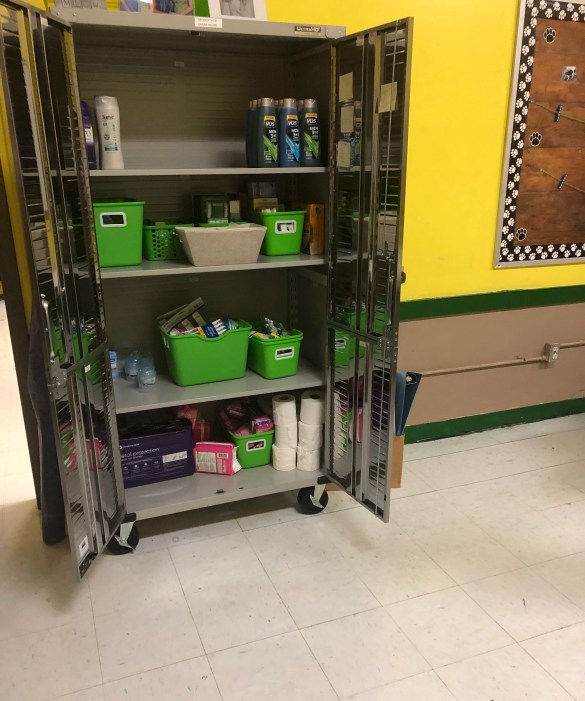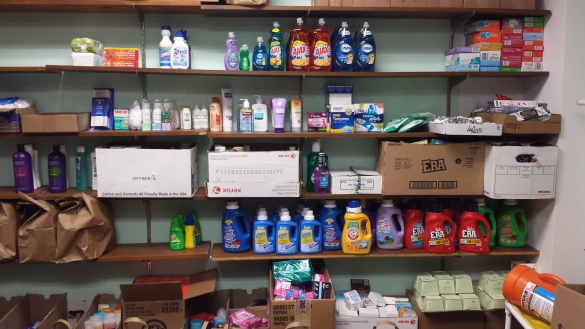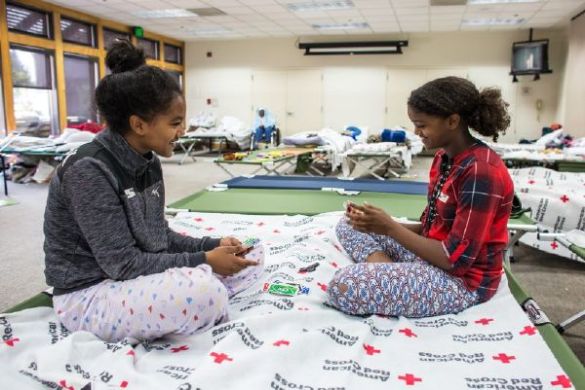This article first appeared in Spotlight on Poverty & Opportunity

“What happens when people can’t pay?” That’s the question that vexes Anne Stuhldreher each day in her job as head of San Francisco’s Financial Justice Project, the nation’s first initiative embedded in local government to assess and reform how fees and fines impact a city’s most vulnerable residents.
Last month, San Francisco County became the first in the nation to make all phone calls from jail free, and to end markups on prison store items. In April, it partnered with the San Francisco Superior Court to clear all outstanding holds on people’s driver’s licenses for missing a traffic court date. And in January, the city announced that it was eliminating overdue library fines.
These are just a few of the landmark reforms to emerge from the relatively young yet prolific Financial Justice Project, launched by San Francisco in November 2016 and housed in the Office of the Treasurer. The project works on the premise that fees and fines, levied partly to generate revenue to balance public budgets, can have an unintended impact of pushing people into poverty. Often, the hardest hit are people of color and those on a low income.
For example, Californians who have their driver’s license suspended because they cannot pay a traffic fine may find it difficult to get a job and support their family. Unpaid parking tickets spiral into unmanageable late fees and recovery costs for towed vehicles. Homeless people who get a $200 ticket for sleeping on the sidewalk may see this grow to $500 if left unpaid. And, people exiting the criminal justice system begin their new life with a bill for thousands of dollars in probation administration fees.
Meanwhile, San Francisco’s research found that the income it generated through such fees and fines was slight compared to the cost of recovery. It also shows that the city levies more fines per capita than most California local governments.
It was this ‘lose-lose’ scenario for people and for government that prompted the city to seek a more equitable solution to fines and fees that could both hold people accountable and recoup costs without causing them financial distress.
Championing economic empowerment
Stuhldreher traces the thread of her current work back to the 2015 U.S. Department of Justice Ferguson report following the death of Michael Brown, the unarmed African-American man shot and killed in Ferguson, Missouri. The report drew national attention to the negative impact of intense ticketing, fees and fines on low-income Americans and people of color. It revealed that Ferguson officials had aggressively raised revenue through fining residents. Fines were the city’s second largest source of revenue in 2013.
“The report showed a pattern of a ticket of a few hundred dollars going to folks who couldn’t pay it,” she explains. “The consequences would start to snowball — their credit could be impacted, their driving license suspended, they could go to jail for non-payment.”
Social justice advocates in California quickly noted that “this was not just a Ferguson problem,” as demonstrated in the eponymous 2015 report on how traffic courts drive inequality in the state. The report showed that four million adults in California had their driving license suspended because they couldn’t pay traffic tickets. Meanwhile, uncollected court-ordered debt accounted for $12.3 billion. In 2013, California brought in $2.6 billion in revenue from fines and forfeits, more than any other state.
And the issue was by no means limited to California or Missouri. Granted, cities rely on fine and fees revenue to balance their budgets. However, the 2007 recession and a drop in tax collections prompted many to dramatically expand this source of revenue to fund services.
Stuhldreher is a self-confessed policy geek with a focus on economic empowerment for low income groups. Her public-private partnership approach has helped deliver San Francisco programs such as the Working Families Credit and Kindergarten to College, and the WE Connect Campaign across the state in her role as senior policy advisor to former Governor Arnold Schwarzenegger.
In 2015, she was working as a senior program manager at a health justice foundation, The California Endowment, and was hearing stories from community organizers about the impact of fines and fees on marginalized groups. So, she began to cast around within her networks for possible solutions.
“I started talking to people at City Hall here about finding a better way,” Stuhldreher explains. “About the fact that we should be able to balance our books but not on the backs of the lowest income people in our city. And we should be able to hold people accountable without impoverishing them.”
Identifying fines & fees pain points
San Francisco city and county treasurer José Cisneros – a champion of financial justice initiatives such as the Bank on San Francisco program to widen access to checking accounts for low-income residents –recognized the need for local government intervention around fines and fees.
Stuhldreher left her philanthropic role to help San Francisco become the first city in the nation to have a financial justice project. As the first-ever Director of Financial Justice for the city and county of San Francisco, she oversaw the work of an exploratory task force of community groups, local government and the courts to identify fine and fees “pain points.”
The taskforce identified a wide range of problems related to San Francisco’s fees and fines, and made a raft of recommendations to help address these issues. Of particular note, it found that in San Francisco, the burden of these fines and fees was falling heavily on the African-American community. For example, the city’s Bayview-Hunters Point neighborhood has a relatively high rate of poverty (23.5 percent) and a driver’s suspension rate more than three times the state average.
Stuhldreher says charges related to the criminal justice system were an immediate concern: “We were handing people a bill when they got out of jail, asking them to pay for their probation supervision and their electronic ankle monitors, for their pre-sentence reports, their drug tests. It added up to several thousand dollars.
“You think about people coming out of jail — most of them don’t have jobs, they have no money, then when they do have a job to have this [to pay]. It is incredibly self-defeating and makes it very hard for them to reintegrate into the community. It’s also a horrible source of revenue.” She adds that collection rate on the largest fee of $50 per month was just nine percent.
So in July 2018, San Francisco became the first county in the nation to eliminate all local administrative fees charged to people exiting the criminal justice system. “We wrote off $32 million dollars in debt that was hanging over 21,000 people That’s debt that would never really come in. It was a burden and a weight on low-income people and people of color in San Francisco.”
The latest example of the Financial Justice Project’s work in the criminal justice arena came last month when San Francisco announced that it will make all phone calls from jail free and end all county markups on jail store items. Currently, if an inmate makes two 15-minute phone calls a day in San Francisco, it will cost $300 over 70 days (the average jail stay), or $1,500 over the course of the year. Analysis done by the project estimates that 80 percent of phone calls are paid for by inmates’ support networks, primarily low-income women of color.
Stuhldreher explains the impact of not being able to afford phone costs: “You’re getting closer to potentially being released but you can’t tell your family, can’t sort a place to live, can’t start looking for work. You can’t call a social worker or anyone in your support network.” The move follows New York City’s decision earlier this year to make prison calls free.
She adds that the average county markup of 43 percent on items from the jail commissary places an unnecessary burden on incarcerated people and their families. The plan is funded in San Francisco Mayor London Breed’s recently announced budget and the Sheriff’s Department will implement these reforms over the next fiscal year.
Partnership approach leads buy-in
The Financial Justice Project has also tackled towing in San Francisco, where it costs $575 on average if you get your car towed and 10 percent of cars are never retrieved. “Losing your car is really onerous. A lot of times, it’s a person’s biggest asset, it’s how they get around,” says Stuhldreher. “Also, it’s a money loser. When someone doesn’t retrieve their car, you’ve got to store it, pay a towing vendor, dispose of it, or sell it.”
The project worked with the Municipal Transit Authority (MTA) to halve towing fees for people who are below 200 percent of the poverty line, and to allow people to pay off citations over time through a payment plan that cost $5 to sign up for rather than previous $65. In the three months following implementation, the MTA saw a 400 percent increase in payment plan sign ups.
“If you make fines and fees more reasonable, people are more able to pay and pay them more readily. So your revenue can actually go up,” asserts Stuhldreher, who also stresses the need to bring those implementing the changes into the conversation to build buy-in.
San Francisco’s library service contacted Stuhldreher last summer with concerns that late fines and blocked library cards were stopping people from visiting their library. The city is now getting rid of library fines, writing off unpaid fines, and introducing measures such as more frequent reminders and automatic renewals where possible.
After San Francisco tackled the probation bill issue, neighboring Alameda County followed suit, with Contra Costa County and Los Angeles working towards similar measures. Oakland banned library fines earlier this month. Stuhldreher says Chicago, New York City and Washington, DC. are eyeing a similar approach around fees and fines. She takes a call “every week” from a city that wants to do the same, or just learn more.
Meanwhile, The National League of Cities has set up the Cities Addressing Fines and Fees program to support six cities across the US to assess and reform the status quo, with learning contributed by San Francisco’s Financial Justice Project.
Stuhldreher is cheered by the project’s progress to date: “We’ve now at this point either eliminated or adjusted dozens of fines and fees, we’ve lifted millions of dollars in debt off of tens of thousands of people.
“I feel like we’re building this muscle locally just to be more thoughtful about what we’re doing.”
But she also advocates for more careful consideration of fines and fees – which should recoup costs and not be punitive – as a means to generate revenue. “These fines and fees are very blunt instruments. You can kind of get on to autopilot and just increase them a little bit each year, add them to cover things. All of a sudden, they’re big, they’ve increased in scope and severity.”
Looking ahead, Stuhldreher is interested in the ‘day fines’ means-adjusted approach to traffic tickets, and is concerned about industries making money from the criminal justice system.
“If you think about people getting out of jail, you want them to stay out of jail. The recidivism rate is so high. If you can cut that, that’s a bigger cost saving. We don’t want to be taking $100 from someone who’s getting by on $500 a month That’s for groceries and shoes for their kids.”


